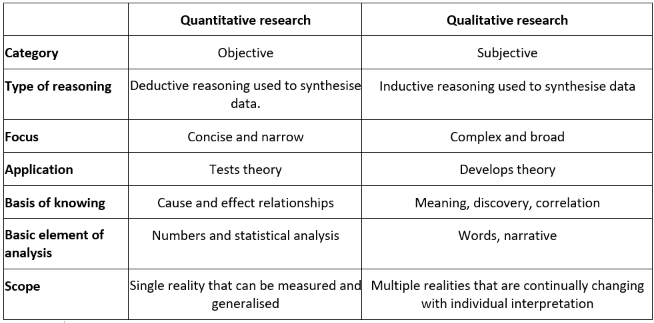4. Quantitative vs. qualitative vs. mixed methods
Quantitative vs. qualitative vs. mixed methods
Quantitative and qualitative research approaches can complement each other and may even appear similar. For example, the use of a questionnaire may be viewed as qualitative research but may actually be quantitative, depending on how the survey is designed. Table 1 outlines the key differences between quantitative and qualitative research:

Table 1: Features of quantitative and qualitative research, adapted from (2).
Research does not have to be entirely qualitative or entirely quantitative. A popular form of research is referred to as ‘mixed methods’ research using both qualitative and quantitative approaches. Researchers combine quantitative and qualitative data instead of analysing them separately. Although there are many definitions of exactly what constitutes ‘mixed methods’, one popular definition (3) describes it as an approach or methodology that:
- focuses on research questions that call for real-life contextual understandings, multi-level perspectives, and cultural influences;
- employs rigorous quantitative research assessing magnitude and frequency of constructs and rigorous qualitative research exploring the meaning and understanding of constructs;
- utilises multiple methods (e.g. intervention trials and in-depth interviews);
- intentionally integrates or combines these methods to draw on the strengths of each;
- frames the investigation within philosophical and theoretical positions.
A checklist for appraising qualitative research trials can be found in Further reading.